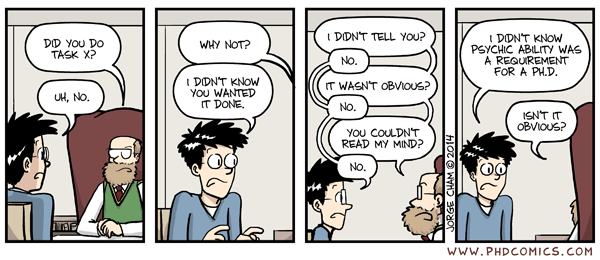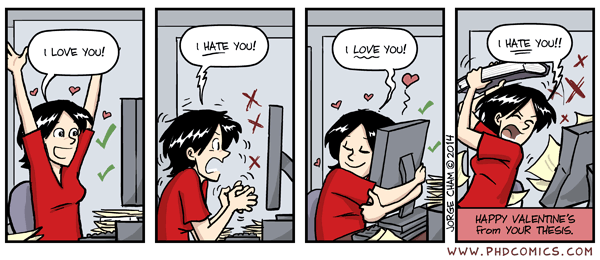Strategiseminaret i forrige uke var opplysende og nyttig. Visedekanus for forskning ved Karolinska Institutet (KI) Hans-Gustaf Ljunggren holdt et engasjerende innlegg om KI sin forskningsstrategi. Deres utgangspunkt var erkjennelsen av at KI ikke var så ledende i forskning som de…
Month: February 2015
NFR FRIMEDBIO søknad 2015NFR FRIMEDBIO application 2015
Den administrative oppfølgingen i forbindelse med søknadsfasen til NFR FRIMEDBIO er nå kartlagt. Klikk her for mer informasjon. Klikk her for mal til FRIPO søknader The administrative follow-up regarding the application process for NFR FRIMEDBIO has now been worked out.…
Initieringsmidler for Alumnusdagen 2015Initiating funds for Alumni Day 2015
Initieringsmidlene er først og fremst myntet på lokale, faglige og/eller sosiale arrangementer i forbindelse med Alumnusdagen 12.09.2015. Søknadsfrist er 12.03.2015. For mer informasjon The initiating funds are primarily aimed at local, academic and/or social arrangements related to Alumni Day 12.09.2015.…
NYTT K1/K2 SEMINAR 2015NEW K1/K2 SEMINAR 2015
Vi har gleden av å invitere alle til neste K1/K2 seminar! Tittel: «Genetic alterations causing resistance to chemotherapy inbreast cancer»Holdes av Stian Knappskog.Seksjon for onkologi, K2, UiB / Mohn Kreftforskningslab., HUSTid: Onsdag 4. mars, klokken 14:15 – 15:00.Sted: Stort Auditorium,…
International Prize for Biology
Prisen vil i år deles ut innenfor fagfeltet cellebiologi. Frist for å foreslå kandidater er 15.04.2015. For mer informasjon This year the prize will be awarded for research within the discipline of cell biology. Deadline for proposing candidates is 15.04.2015. …
The Keio Medical Science Prize
Prisen deles ut for banebrytende og kreativ forskning innenfor medisin og livsvitenskap. Frist for å foreslå kandidater er 10.03.2015. For mer informasjon The prize gives recognition to outstanding and creative achievements in the field of the medical and life sciences. …
Kvinnehelsedagen 2015Women Health Day 2015
Arrangementet finner sted i Oslo den 21.03.2015. For mer informasjon The event will take place in Oslo on 21.03.2015. For more information (in Norwegian)
Ny Ph.d.-koordinator ved Klinisk institutt New PhD-Coordinator at Department of Clinical Science
Nåværende Ph.d.-koordinator Kristian Jensen vil begynne i ny jobb 01.05.2015. Førstekonsulent Irene Lavik Hjelmaas vil da ta over alle Ph.d.-relaterte oppgaver. Kristian vil også være fraværende i tidsperioden 27.02.2015 – 06.04.2015, så i denne perioden kan Irene også kontaktes i…
10th NRI-Conference 10th NRI-Conference
Konferansen, som har tittelen «Nordic Cooperation for Future Health Challenges» finner sted i Bergen 4-5 mai, 2015. For mer informasjon The conference, which is titled «Nordic Cooperation for Future Health Challenges» will take place in Bergen on May 4-5, 2015.…
Disputas uke 10Public defence Week 10
Carla Patrica Duarte Fernandes disputerer for Ph.d. graden torsdag 5. mars 2015Prøveforelesning: Torsdag 5. mars 2015, kl.09.15Oppgitt emne: “Genomics neurodevelopment and neuropsychiatry – what studies of cognition can tell us about psychosis risk” Sted: Auditoriet, Barneklinikken, Jonas Lies vei 65Disputas: Torsdag 5. mars…
Disputas uke 10Public defence Week 10
Dhanasekaran Sivakumaran disputerer for Ph.d. graden torsdag 5.Mars 2015Prøveforelesning: Torsdag 5. mars 2015 kl. 09.15Oppgitt emne: “Tuberculosis and latent tuberculosis infection: dignostic strategies in high- and low endemic settings” Sted: Auditorium 1, Bygg for biologiske basalfagDisputas: Torsdag 5. mars 2015 kl.11.15Sted: Auditorium 1, Bygg for…
Disputas Uke 10Public defence Week 10
Jan Anker Jahnsen disputerer for Ph.d. graden fredag 6.mars 2015 Prøveforelesning: Torsdag 5.mars 2015, kl.15.15 Oppgitt emne: “Topology and pharmacological importance of inotropic glutamate channels (NMDA and AMPA receptors)”Sted: Auditorium 1, Bygg for biologiske basalfagDisputas: Fredag 6. mars 2015, kl.10.15 Sted: Auditorium 1,…
Nye publikasjonerNew Publications
Uke 09/2015. Global Coronary Artery Plaque Area is Associated with Myocardial Hypoperfusion in Women with Non-ST Elevation Myocardial Infarction.Eskerud I, Gerdts E, Nordrehaug JE, Lønnebakken MT.J Womens Health (Larchmt). 2015 Feb 18. PMID: 25692527 Basert på siste ukes søk på…
PhD comicsPhD Comics
Ukens Leder This week`s editorial
Medisinerstudenter som utplasseres ved Førde sykehus får tverrfaglig trening som ledd i praktisk undervisningsopplegg i 3. indremedisinske termin, og studentene er begeistret både over å få jobbe ansvarlig og få tilbakemelding på hvordan jobben utført og for å få trene…
CCBIOs tredje symposium (2015)CCBIO’s 3rd symposium (2015)
CCBIO har sitt tredje årlige symposium på Solstrand 19-20 mai 2015. For mer informasjon klikk her. CCBIO will arrange its third annual symposium at Solstrand on May 19-20, 2015. For more information click here.
Omsorgsteknologikonferansen 2015 «Omsorgsteknologi i drift!»The Care Technology Conference 2015 «Care Technology in Action!»
Konferansen finner sted ved Høgskolen i Bergen den 19.05.2015. For mer informasjon klikk her. The conference will take place at Bergen University College on 19.05.2015. For more information (in Norwegian) click here.
MIC – 11th confocal course
Kurset er myntet på de som ønsker å lære mer om hvordan man bruker konfokal mikroskop og vil gi deg den bakgrunnen du trenger for å kunne begynne med konfokal bildebehandling enten med utstyret på MIC eller ved din lokale…
Oslo Cancer Cluster – R&D nettverksmøte om kreft og ernæringOslo Cancer Cluster – R&D Network Meeting on Cancer and Nutrition
Nettverksmøtet finner sted 18.03.2015 klokken 14-17 i Oslo. Tema: “Role of nutrition in cancer – prevention, treatment and rehabilitation“. For mer informasjon klikk her. The Network Meeting will take place on 18.03.2015 at 14-17 in Oslo. Topic: “Role of nutrition…
The 13th International Symposium on Sjögren’s Syndrome
Konferansen finner sted 19-22 mai, 2015, i Bergen. For mer informasjon klikk her. The event will take place on May 19-22, 2015, in Bergen. For more information click here.
Sjekk publikasjoner i CRIStinVerify publications in CRIStin
Dette er en oppfordring til alle vitenskapelig ansatte at de sjekker i CRIStin at publikasjoner for 2014 er lagt inn. Instituttets siste frist for innlegging er 27.02.2015. Det er den ansattes plikt å legge inn publikasjoner som mangler, men administrasjonen…
Veilederseminar 25.03.2015Supervisor seminar 25.03.2015
Fakultetet inviterer til veilederseminar 25. mars. Arrangementet finner sted på Scandic Hotell Bergen City fra 09.00 – 15.45. Kursansvarlige er Roland Jonsson og Per Bakke. Bindende påmelding til mirza.mujic@mofa.uib.no innen 01.03. Klikk her for oppslag om seminaret. Klikk her for program. …
PhD Comics
StrategiseminaretThe strategy seminar
Neste uke møtes K2 sine forskningsgruppe- og fagområdeledere til strategiseminar. Et hovedtema er organiseringen av instituttet. Mye fungerer bra hos 2-åringen K2 og jeg vil trekke fram de administrative tjenestene som et godt eksempel. Mindre vellykket er delingen av organisasjonsstrukturen…
Smådriftsmidler 2015Small operational funds 2015
Forskningsgruppene ved K2 inviteres til å søke om smådriftsmidler 2015. Frist: 01.03.2015. Klikk her for mer informasjon. Klikk her for søknadsskjema. The K2 research groups may now apply for small operational funds 2015. Deadline: 01.03.2015. Click here for more information…
MedisinerrevyenMedical student review
februar arrangerer medisinerrevyen best-of-revy. For mer informasjon On February 17 the Medical Student Review (medisinerrevyen) will arrange a best-of-review. For more information (in Norwegian)

